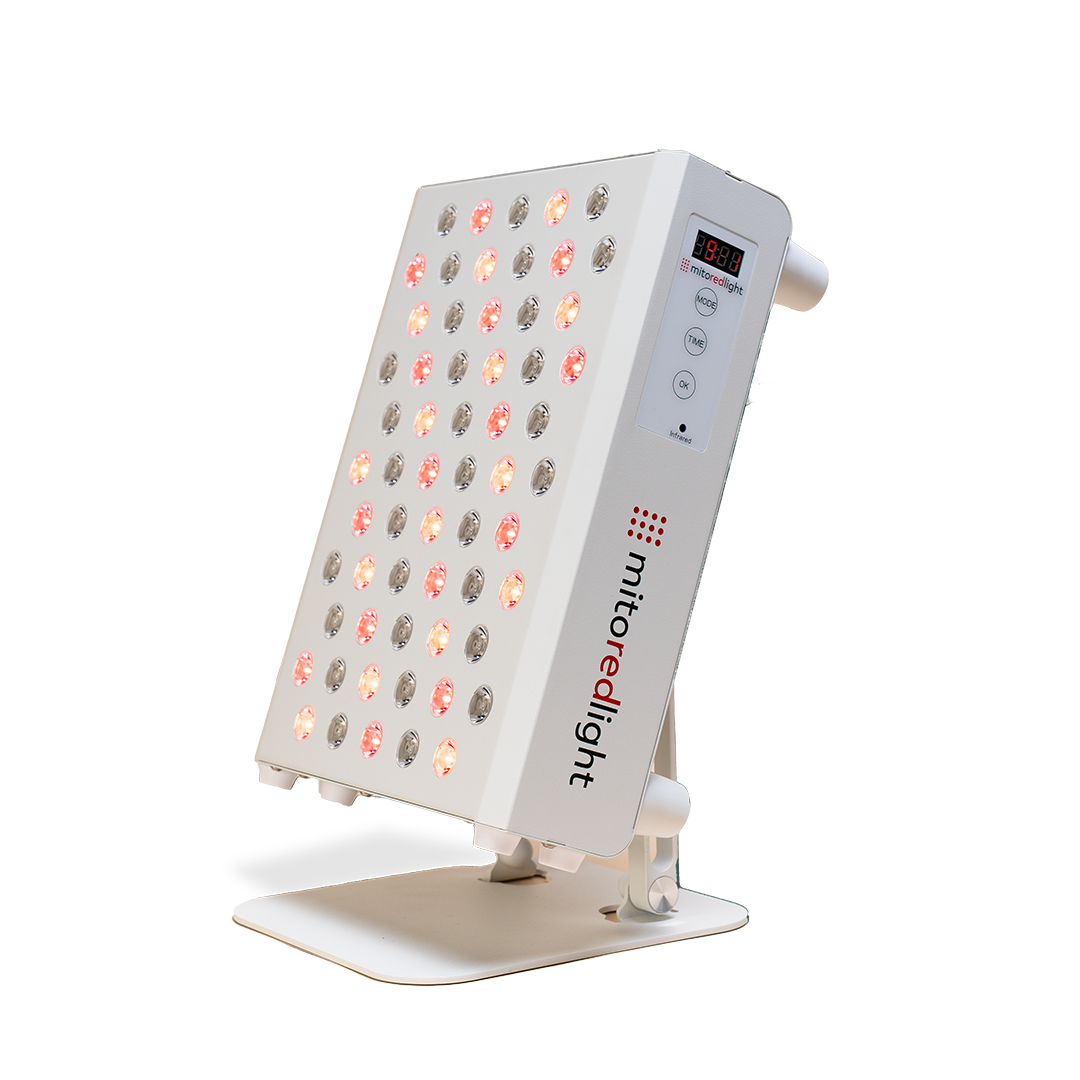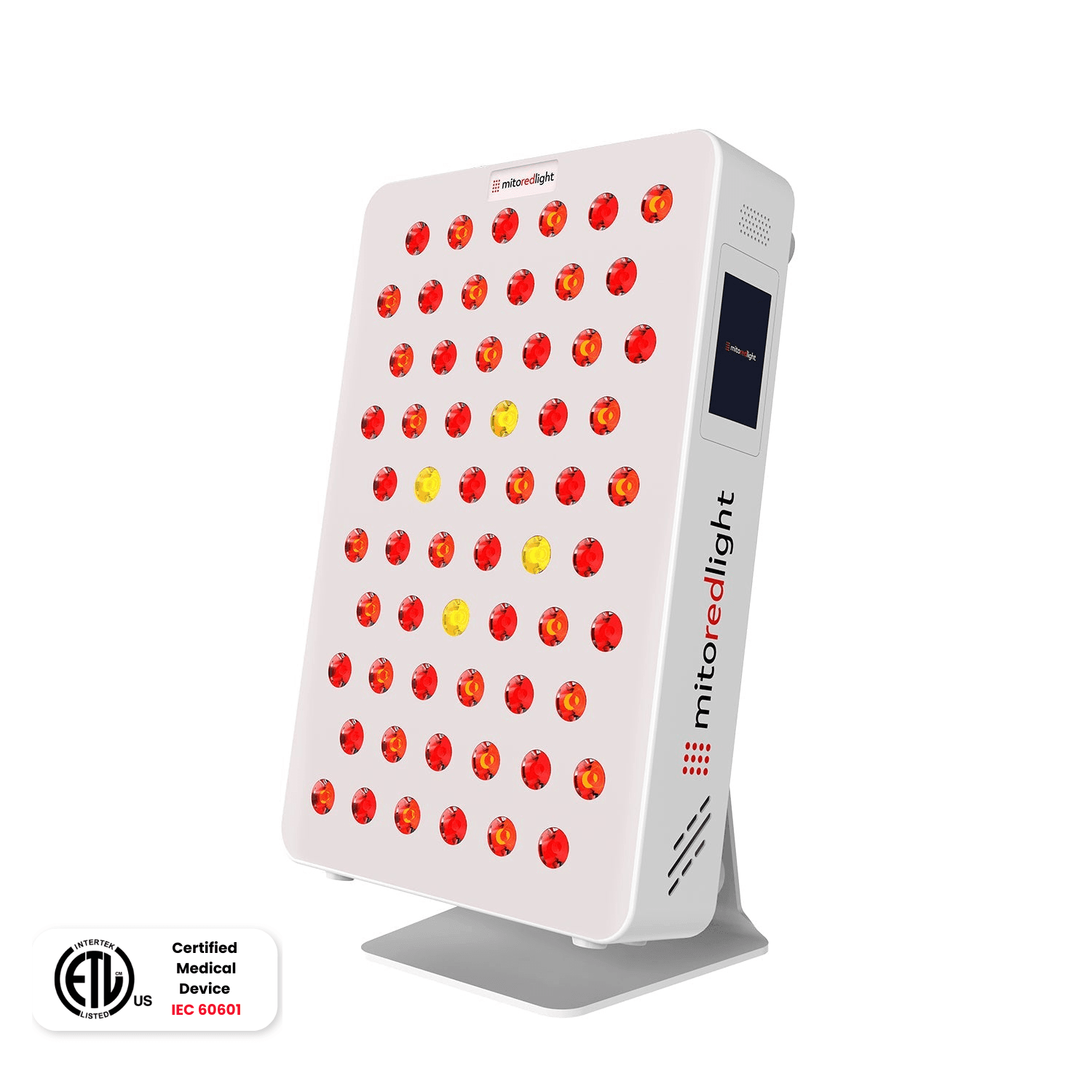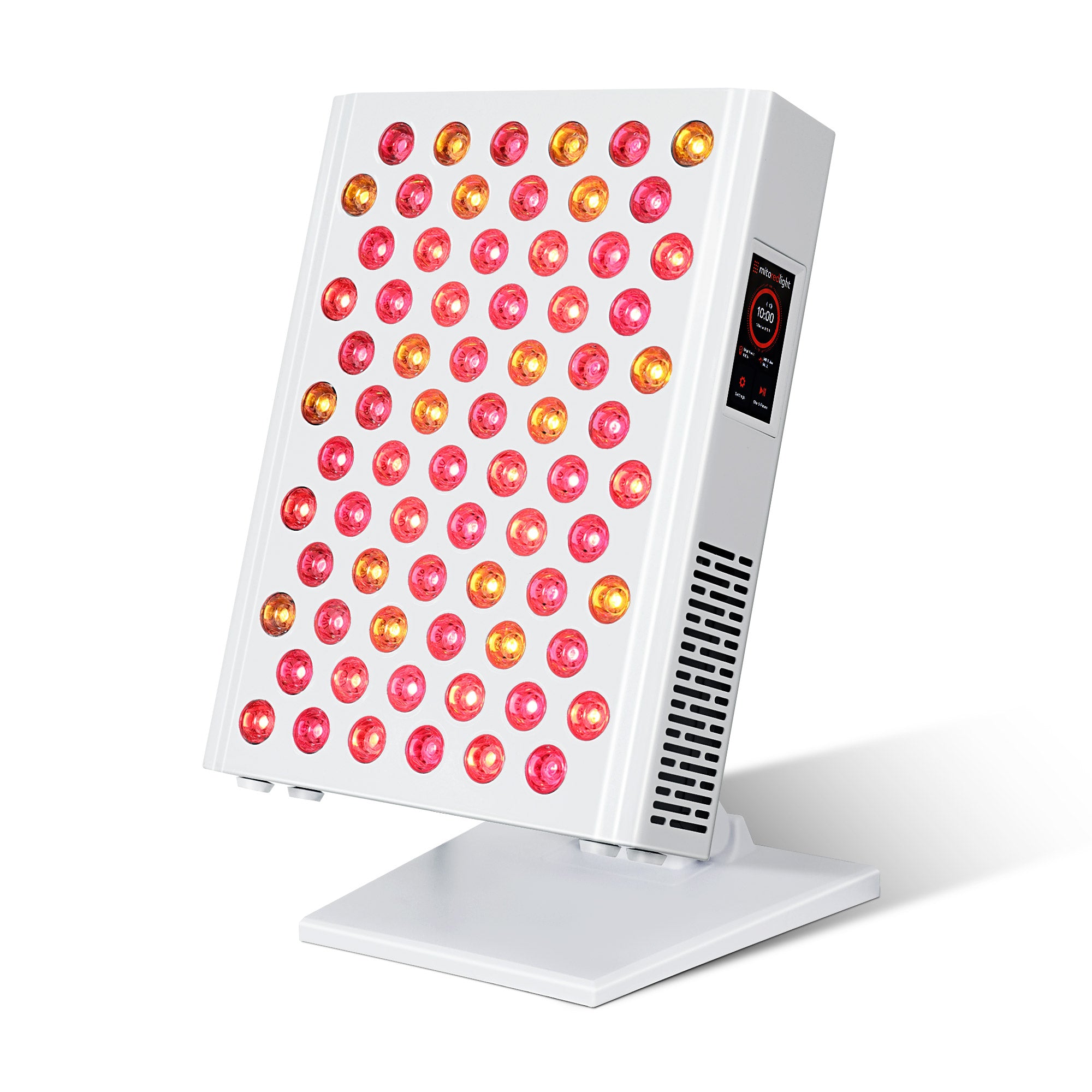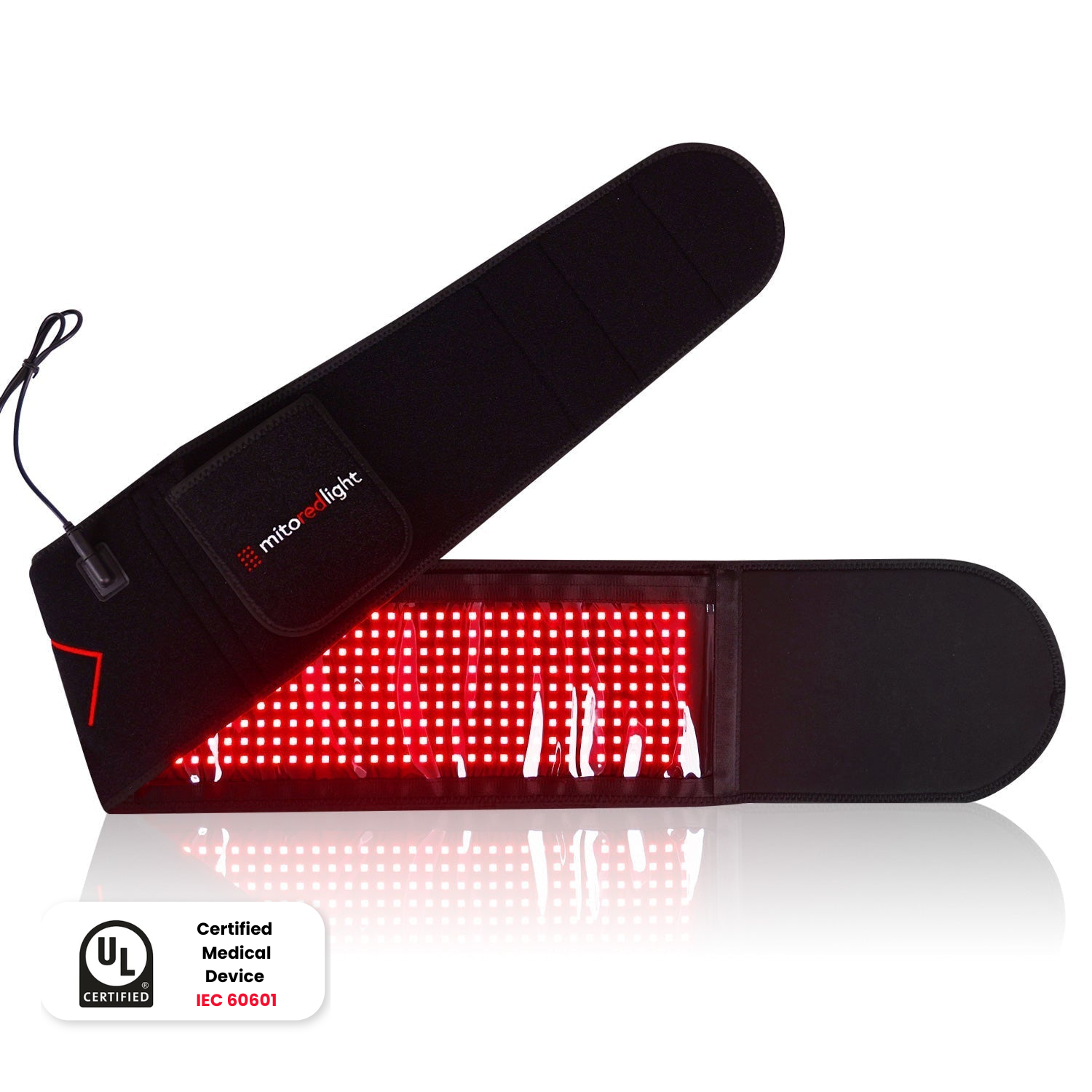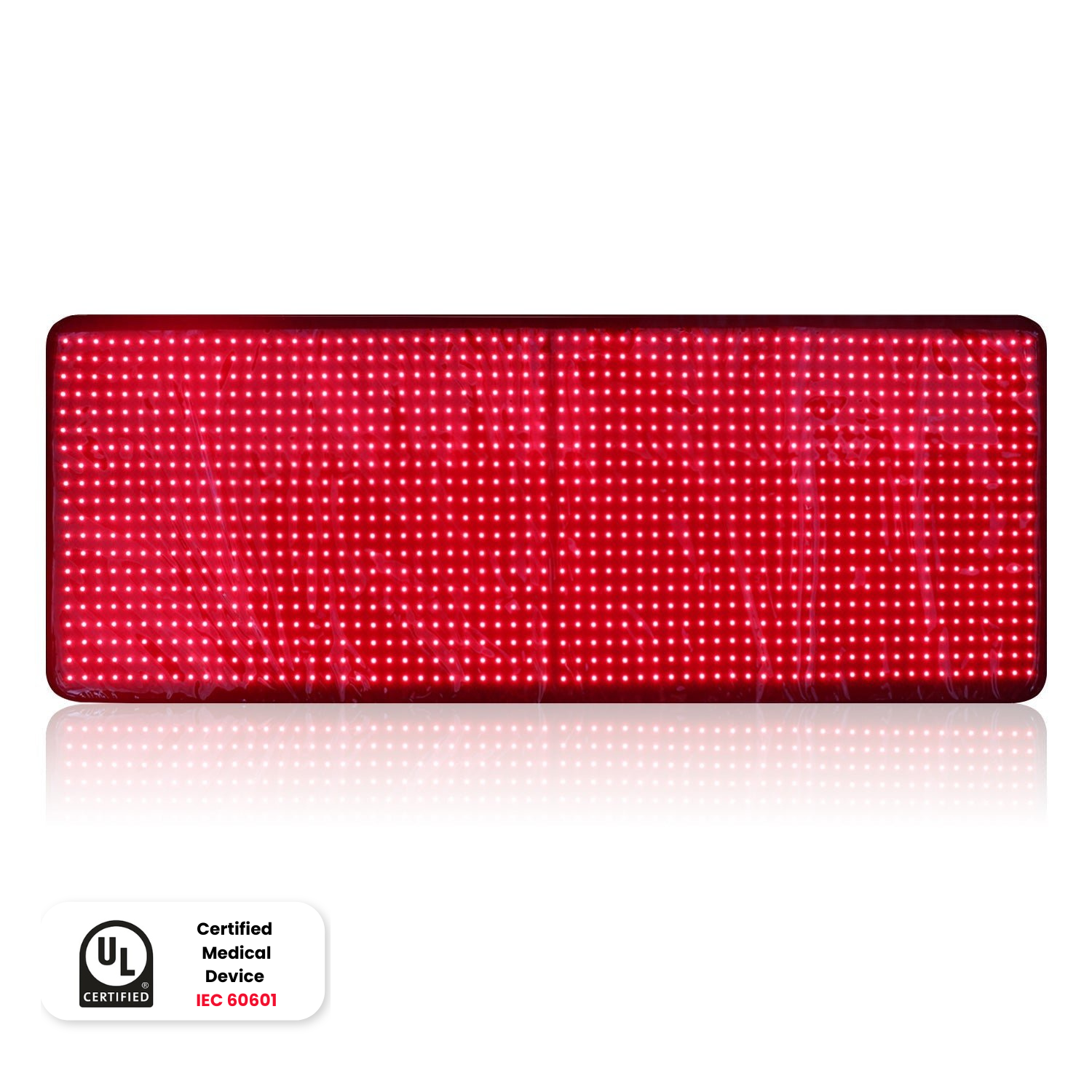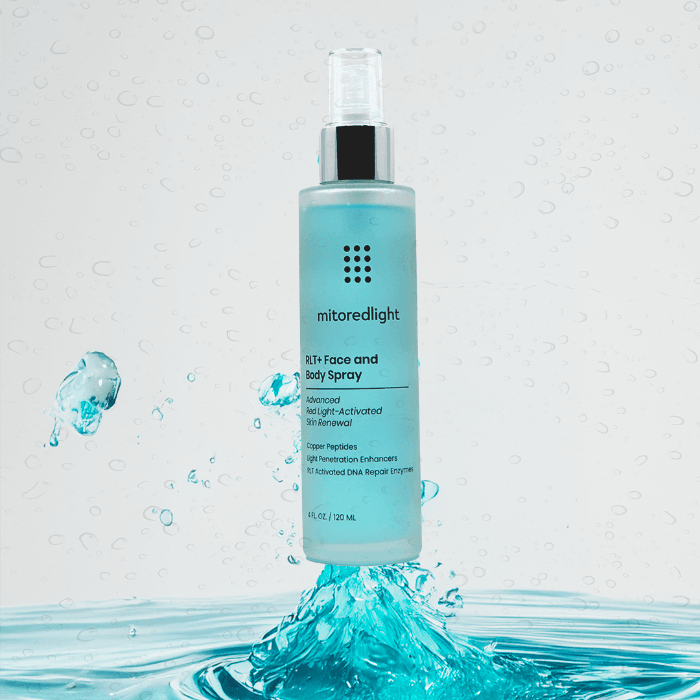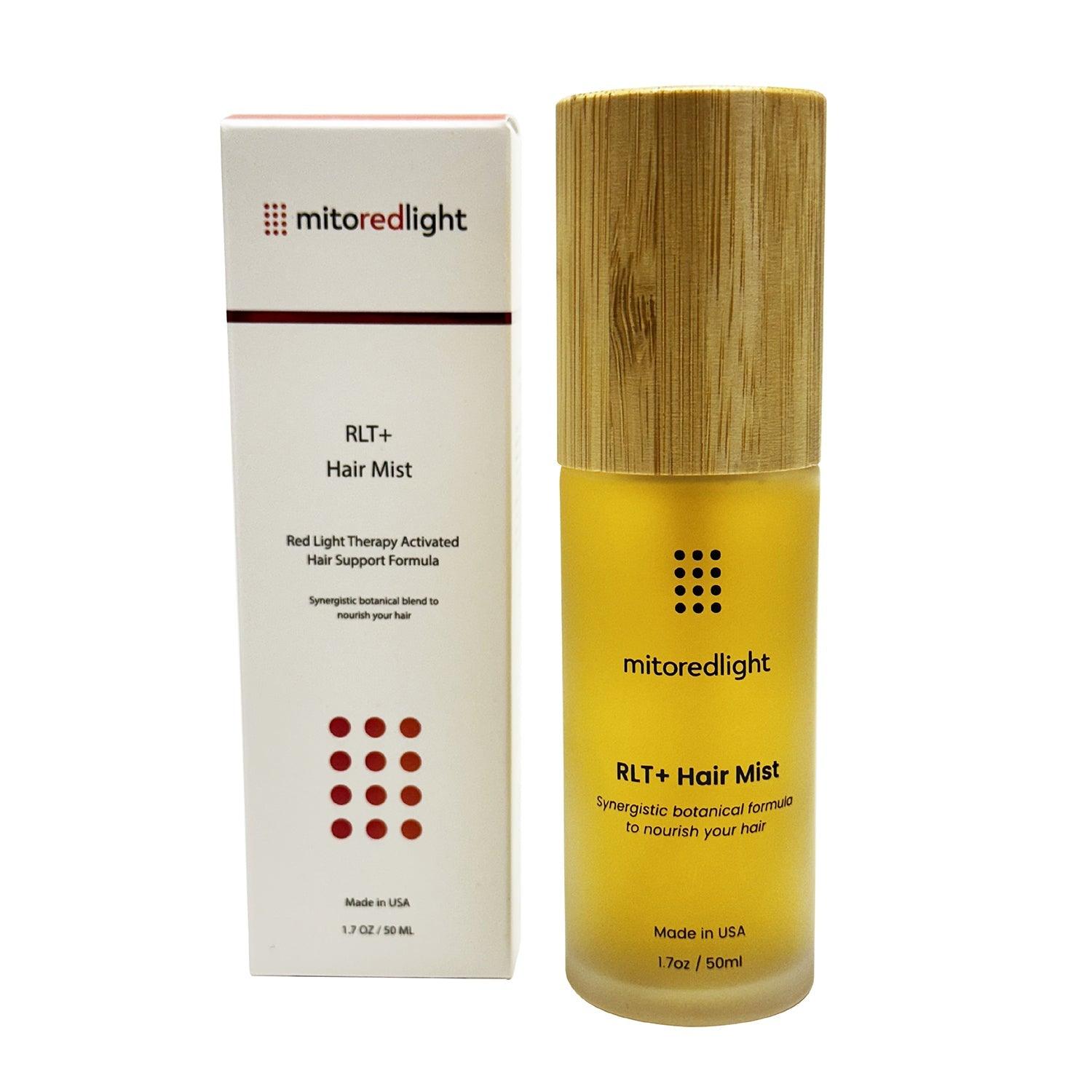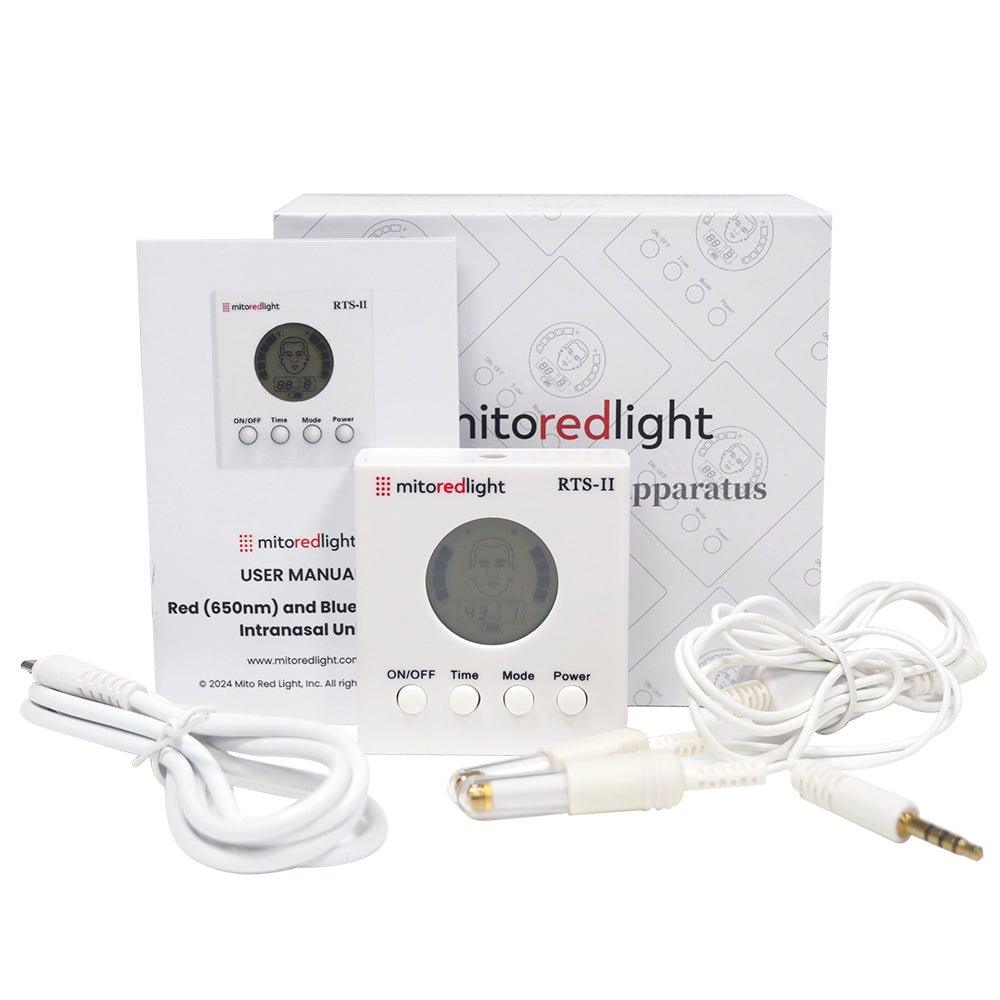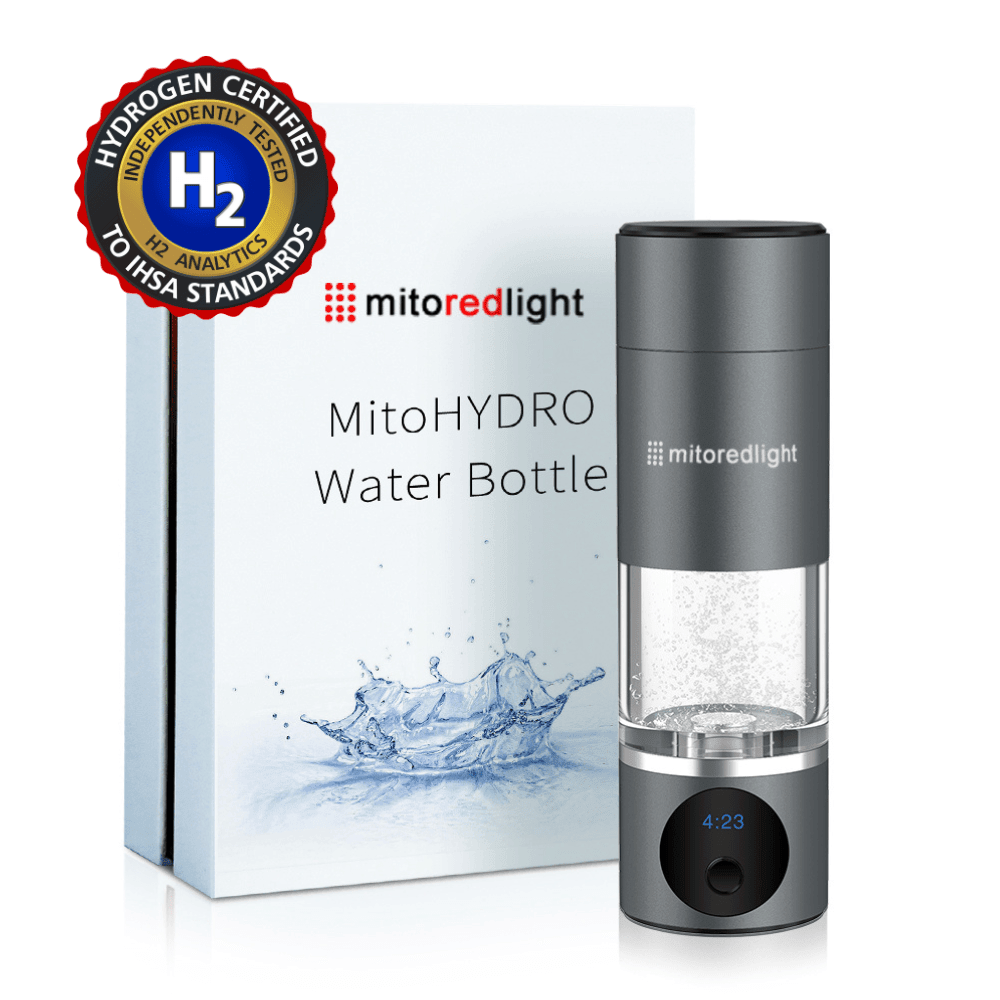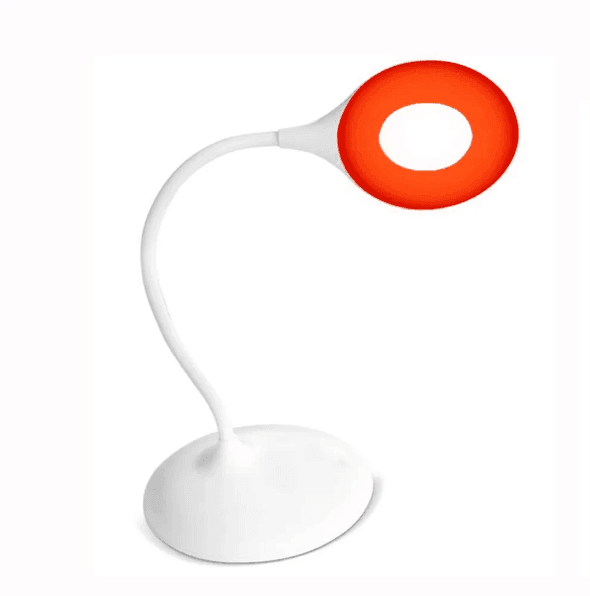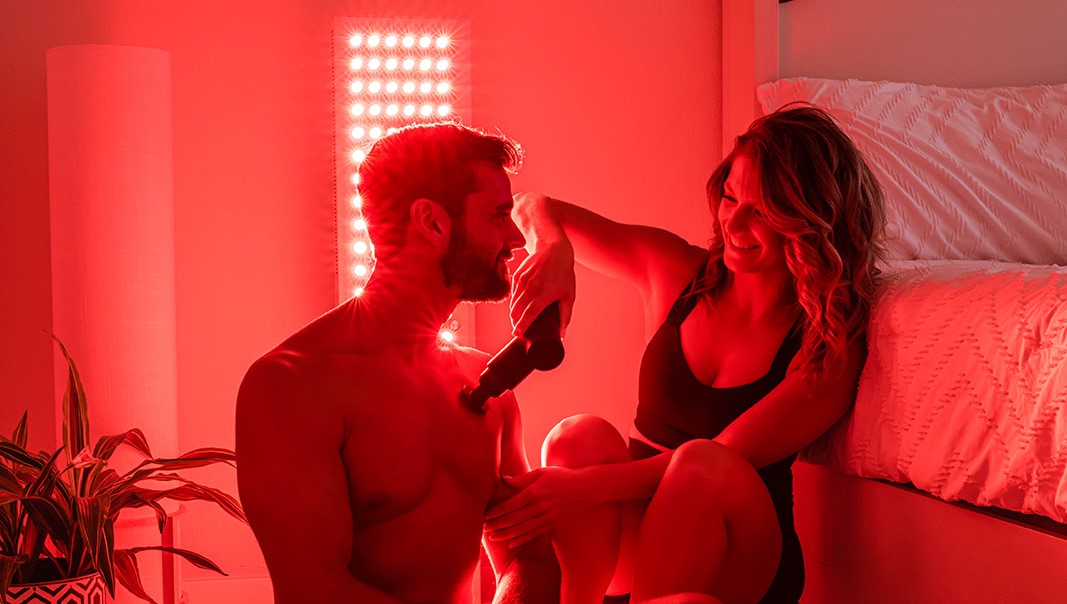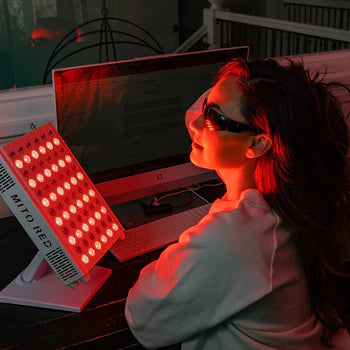DISCLAIMER: Mito Red Light devices are Class II wellness devices aimed at affecting the body through topical heating and supporting cellular function. The information provided in this article and on this site is for educational purposes only and is not intended to imply effectiveness of Mito Red Light devices for any specific application. The information provided in this article and on this site is not intended to diagnose, treat, cure, or prevent any disease, is not a substitute for consultation with a licensed medical provider and should not be construed as medical advice. Click here to read our article on potential contraindications of red light therapy..
Medically Reviewed by | Heidi Wright, BSN, RN, PCCN
Table of Contents
- Red Light Therapy’s Foundation in Science
- Red Light Therapy and Eye Risks
- Eye Function and Natural Light Protection
- Basic Eye Function
- Natural Eye Protection
- Light Damage to the Eyes
- Type of Light Damage
- Light Damage Prevention
- Avoidance
- Filtering
- Blocking
- Light Damage and Red Light Therapy
- Research into Infrared Light Eye Damage
- Neutrogena Recall
- Eye-Related Benefits of Red Light Therapy
- Red Light Therapy: What's the verdict on safety?
- Mito Red Light
Red light therapy uses specific wavelengths of light that have been found to stimulate mitochondria in cells. Mitochondria play an essential role in producing energy in the body and maintaining cell health. Red light penetrates deep into body tissues and can reach cells that other types of light will not.
There are a variety of potential applications for red light therapy, and people use it for:
- Promoting wound healing
- Improving natural hair growth or reducing hair loss
- Improving skin health and quality while reducing wrinkles and scars
- Reducing arthritic pain
- Improving sleep quality and duration
- Improving acne
- Reducing inflammation
Many of these applications have ongoing research that supports the use of red light therapy and shows that it has positive effects.
Red Light Therapy’s Foundation in Science
While the concept of red light therapy may seem unusual to those who are not familiar with it, there are many known uses and effects that light has on the body that have been well studied. Specific ultraviolet wavelengths of light that are found in sunlight stimulate cells to produce melanin, creating darker skin pigmentation. People use this effect of light to obtain a more tan complexion. Specific wavelengths of ultraviolet light also stimulate a chemical reaction that creates vitamin D within the body. The vitamin D-synthesizing effects of ultraviolet light have only been understood for a few decades.
Light therapy is even used in the medical setting, specifically to treat a condition called hyperbilirubinemia in newborns. Some newborns are initially unable to break down excess red blood cells, and a byproduct called bilirubin can accumulate. High levels of bilirubin can be toxic and lead to brain damage. Medical scientists have found that certain wavelengths of light can be used to break down bilirubin and treat bilirubin using only light therapy, called phototherapy in the medical field. Interestingly the 'peak action spectra' for bilirubin breakdown appear to be around 470nm (blue/green or turquoise). We discuss the peak action spectra of red and NIR wavelengths in our article outlining the design of our MitoPRO series.
While the concept of red light therapy may cause skepticism for those who are not familiar with the science of light therapy, there are many well-documented and medically accepted effects that light has on cells within the body. Red light therapy continues to explore more applications and benefits that are caused by the effects that it has on cellular mitochondria.

Red Light Therapy and Eye Risks
As red light therapy becomes increasingly popular, one important question is if red light can create any potential risks to eye health. Exposure to bright lights and sunlight is known to lead to lasting eye problems in certain situations. Light-related injuries can cause damage to the lenses of the eyes and the retina and may lead to lasting visual deficits. While certain light exposures can cause eye injury, the question of whether red light therapy specifically increases risks to eye health is important for those wanting the potential benefits that red light therapy offers.
Eye Function and Natural Light Protection
To fully understand the risks that light creates for the eyes, it is important to understand how the eyes function and how they protect themselves from light damage. This understanding of the eyes’ physiology provides the foundation needed to understand how light affects the eyes.
Basic Eye Function
The eyes work by detecting light through the cornea and sending signals that are detected to the eyes. Light is detected by two types of cells in the back of the eyes. Rod cells are very sensitive to the presence of light but are not able to detect changes in light. Cone cells also detect light, but only at certain wavelengths. There are three different wavelengths of light that cone cells can detect, which provides us with the ability to perceive colors.
Cone cells and rod cells are arranged in a sheet in the back of each eye. This sheet of cells is called the retina and is responsible for actually detecting light. The image projected onto the retina in the back of the eye must first pass through the lens of the eye. The lens is located in the front of the eye and changes shape to focus the image clearly on the retina.
Natural Eye Protection
The eyes have many methods of protecting themselves from excess light. The eyes must be able to function both in the bright sunlight and the dark night. This means that the eyes must be sensitive enough to detect very small amounts of light, filtering out almost nothing, while also functioning well in with high levels of light that must be filtered out.
The first way that the eyes protect themselves is by adjusting the iris. The iris is the colored part of the eye and covers the lens. The iris adjusts its size to cover more of the lens and allow less light in when there is a high amount of light and opens to let more light in when there are lower levels of light. The iris adjusts size very quickly and is an important method the eyes use to protect themselves.
Another important component of eye protection is the role of the eyelids. The eyelids not only protect the eyes from physical injuries, but also allow for some control over the level of light that enters the eyes. The eyelids can screen out most light when they are closed, although some light may still enter the eyes. The eyelids can also control light entering the eyelids through squinting. Squinting is under conscious control, but may be done subconsciously in high-intensity light.
Light Damage to the Eyes
Light can damage both the sensitive rod and cone cells in the retina and the lenses. The role of light in general in causing damage to the eyes is somewhat controversial, with conflicting research. It is, however, understood that intense, high-energy light (UV light) is harmful to the eyes, especially when exposure is chronic, occurring over a prolonged period of time or multiple times over a period of time. Prolonged exposure to UV light leads to retinal damage and can also lead to early onset age-related macular degeneration, an eye disease that can result in vision loss and blindness.
Light travels in waves, and until the last century, it was poorly understood. The famous physicist, Albert Einstein, contributed significantly to how we understand the energy light contains. Einstein famously conducted an experiment to show that the energy of light depends on the wavelength of the light, not its intensity. His experiment used light to break protons off a material and showed that no matter how intense a long-wavelength of light was, it would not break off protons. He then showed that a very low intensity of short-wavelength light would break off protons and that the more intense this short-wavelength light was, the more protons would be broken off.
This principle is somewhat counterintuitive but is a foundational concept of quantum mechanics. This principle shows that the energy of light depends on its wavelength, not its intensity. Light with shorter wavelengths has higher energy, while light with longer wavelengths has less energy. Red and infrared light is a long wavelength, lower energy light, while blue and ultraviolet light is a short wavelength, high energy light.
Type of Light Damage
There are different types of light damage that can occur to the eyes. This most often is due to high-energy light, such as ultraviolet light, or to high-intensity light, such as the light used in lasers.
Many types of light damage are related to high-energy light. Welding is a common source of light damage that has been well-studied. The ultraviolet light that is caused by a welding arc can lead to a condition called a flash burn; this condition is sometimes compared to a sunburn in the eyes.
Another form of light-related damage is laser damage to the eyes. This form of damage occurs from light in many wavelengths and is caused by the very high degree of intensity that a laser creates. Lasers focus a high amount of light on a very small area. The lens of the eyes focuses this high-intensity beam even further on a very small area. The condensation of light into a very small area can cause heat-related injuries and other injuries that light would not normally cause. Red light therapy devices such as Mito Red devices use light-emitting diodes (LEDs) not lasers. LEDs spread the energy out over a wide field and hence do not cause this type of injury.

Light Damage Prevention
There are three basic methods of preventing light-related damage to the eyes beyond the natural defenses that the eyes use. These three methods include:
Avoidance
“An ounce of prevention is worth a pound of cure,” Benjamin Franklin famously said. Avoiding situations where light damage is likely to occur is an important way to avoid light damage to the eyes. Not looking directly into the sun, avoiding shining a laser in your eyes, and not looking into welding arcs are examples of avoiding high-risk activities that can cause damage to the eyes.
Filtering
Sunglasses are widely available throughout the world and are commonly used in areas with high amounts of sunlight. Sunglasses remove a percentage of the light that enters the eyes, reducing the intensity of light. While sunglasses are the most commonly recognized form of light filter, there are many others.
Blue light glasses are an increasingly popular form of light filter that specifically blocks high-energy light while allowing low-energy light to enter the eyes as normal. Blue light filtering glasses are normally used during the day by people who use computers frequently and reduce screen fatigue and eye strain. Blue light-blocking glasses can be worn in the evening to completely block blue/green light from entering the eye. Blue/green light exposure to the eyes after sunset is known to delay/reduce melatonin production which, can interfere with sleep onset and quality.
Industry-specific filters may be used depending on the potential for exposure to lasers or certain types of light that are common in certain industries. Welders, for example, use special shields that help to remove most of the high-energy light in a welding arc, significantly reducing the likelihood of flash burns.
Blocking
Completely blocking light is used in certain situations where high-energy light may cause damage. Also called shielding, blocking light completely can help to protect people from dangerous sources such as industrial-grade lasers. Shielding is used by people who plan on exposure to harmful light, such as the light used in ultraviolet tanning beds, as a way of protecting their eyes from the harm that this light would likely cause to their eyes. Infants receiving phototherapy also sometimes use shielding to block light that could potentially be harmful to their eyes.
Light Damage and Red Light Therapy

The ultimate eye health question for people using red light therapy is if red light therapy causes eye damage or is harmful to eye health. While the research into this question is ongoing, there is currently no clear indications that the levels of red light used in red light therapy is harmful to people’s eyes.
The main causes of light-related injuries tends to be high-energy light, such as ultraviolet lights, or by high-intensity lights, such as lasers. Most red light therapy devices similar to those from Mito Red, uses low-energy red or near-infrared light (sometimes referred to as low-level laser therapy or photobiomodulation) from LEDs that are not concentrated, significantly reducing the risk of potential harm to the eyes.
Research into Infrared Light Eye Damage
Most sources agree that there is only one significant piece of research that indicates there may be long-term harm to the eyes with frequent exposure to red or near-infrared light. This study was conducted in 1984 and examined the effects of infrared light on Swiss glassblowers. The study found that the glassblowers who were exposed to infrared light frequently over several years were found to be more likely to develop cataracts, which affect the lenses of the eyes.
This study, conducted almost forty years ago, may not fully take into consideration other potential explanations, such as the other, potentially high-energy, wavelengths of light the glassblowers were consistently exposed to. The study also does not explore the potential effects of heat on the eyes. Keep in mind that infrared led light therapy produces heat, while red LED light and near-infrared light do not. The chronic eye dryness that heat causes seems to some to be a more likely explanation of the increased likelihood these glassblowers had of developing cataracts.
In addition to the more well-known glassblower study, there have also been studies in which infrared light was emitted into rabbits’ eyes at close proximity, after which the rabbits’ were dissected and the chemistry of their eyes were examined.
The authors of the above study concluded:
"Cortical cataract appeared below the exposed area of the iris in eyes that had been exposed for 6 min to an irradiance of 1.27 W cm-2 or higher. The monitored temperature in the anterior chamber began to increase in the region adjacent to the exposed area of the iris with the onset of IR exposure. These results demonstrate that 808-nm IR is absorbed and converted to heat within the iris, which is then conducted to the lens and produce a cataract, as Goldmann theory states."

At first that sounds concerning - but it is worth noting that that this is ~25-35 times higher Near Infrared (NIR) light intensity than you would be exposed to at 6 inches from a Mito Red device. Furthermore, our guidance has always been to not look or stare directly into the LEDs.
Research into infrared light eye damage is ongoing, and with some of the research there is some difficulty in separating the effects of heat from the light source with the effects of the infrared light exclusively. Furthermore, since "infrared" light is composed of near, mid and far infrared, it is important to understand how different parts of the IR spectrum may carry more or less risk to the eye.
Neutrogena Recall
Neutrogena recently recalled a light mask used to treat acne due to potential negative eye effects reported by their customers. While this mask used red lights, it also contained high-energy blue lights that are known to have negative effects on the eyes. Neutrogena has not indicated if they believe that the red light also contributed to the potential damage caused by their device, but Michael R. Hamblin, an organic chemist at the Wellman Center for Photomedicine at Massachusetts General Hospital, was cited in a recent article as pointing out the blue light included in the mask as the component that most likely caused eye damage.
Eye-Related Benefits of Red Light Therapy
While people may be concerned that red light therapy can damage the eyes, the evidence for this is quite inconclusive. There is, however, a body of research that has shown eye benefits to using red light therapy (at modest doses).
The American Academy of Ophthalmology (AAO) reported in late 2020, that "a study in The Journals of Gerontology found that brief exposure to deep red light — three minutes a day for two weeks — improved older adults’ ability to discern letters against a similarly colored background.”
The AAO also cited two other studies discussing the potential eye-related benefits of red light therapy. “A 2017 study found that red light partially reversed the effects of aging in the retinas of old mice, enhancing retinal performance by 25%,” the AAO says. “And a 2019 study found that while blue light damaged lab-grown retinal cells, red light reversed that damage.”
The AAO emphasizes that clinical research into this area is still ongoing, and that further research is needed before red light therapy can safely and effectively be recommended as a treatment for eye-related aging.
Red Light Therapy: What's the verdict on safety?
Ultimately, the question is if red light therapy is safe for the eyes. The answer is still under research, but is more complex than a simple yes or no. There is some inconclusive research showing potential harm when high levels of unshielded infrared light are used frequently over a prolonged period of time. There is also reputable research showing that LOW DOSES of red light therapy can help to improve the function of the eyes and even repair damage caused to the eye by blue light.
While research into this area continues to develop, the safety of red and near infrared light therapy will probably depend on the intensity of the light, contamination with other wavelengths caused by poor-quality devices, exposure to heat from poor quality or non-LED devices, the length and frequency of red and/or near infrared light exposure, and the types of filters or shields used during the therapy.
Those concerned about potential negative eye effects caused by red and near infrared light therapy should use shielding or filtering to reduce the dose of red and/or NIR light reaching the eye. Mito Red offers extremely low cost additional / replacement protective eyewear HERE.

|
 |
| Mito Red Light IR5 Glasses | Mito Red Light Opaque Glasses |
People using red light therapy should also listen to their bodies and use more shielding or distance from the light source if they experience eye discomfort or dryness during red light therapy. And of course, if you have any eye conditions or any health conditions at all, please consult your doctor before using a device like Mito Red.
“Look for devices that are FDA-cleared or CE-marked, which indicates they meet certain safety standards,” notes Heidi Wright, Registered Nurse.
“Start with shorter sessions and monitor your eyes for any discomfort. If you experience any persistent eye pain, stop using the device and consult a doctor. A healthy lifestyle with a balanced diet and good sleep hygiene is also crucial for eye health,” Wright highlights.
Mito Red Light
Mito Red Light provides a variety of professional and at home red light therapy products that are designed with your safety and health in mind. We welcome you to review our selection of high-quality products or to contact one of our expert representatives at +1 866-861-6486.
Related Articles:
- An Overview of Uses of Red Light Therapy
- Everything You Need to Know About Red Light Therapy and SLEEP
- Medical School Professor Describes How Sunlight Affects Health
